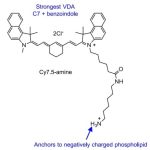The Haber-Bosch process is one of the most important chemical reactions on Earth—it feeds over half the global population by producing ammonia for fertilizers. But it comes at a massive cost: ~1% of global CO₂ emissions and 1–2% of total energy consumption.
Now, researchers from MIT and Georgia Tech propose a radical shift: using pulsed ultrasound to drive nitrogen fixation in water, offering a decentralized, carbon-free, and energy-efficient alternative.
Welcome to the world of ultrasound nitrogen fixation—where sound waves could replace fossil fuels in feeding the world.

The Problem with Haber-Bosch
- Operates at 400–500 °C and >100 atm
- Relies on hydrogen from natural gas, emitting CO₂
- Centralized plants make it inaccessible to small farmers
- High capital cost and inflexible deployment
These limitations demand a scalable, decentralized, and green alternative.
Enter Pulsed Ultrasound: How It Works
In the study, Lawal et al. demonstrate that:
- Ultrasound waves in water create tiny bubbles that collapse violently (a process called cavitation)
- This generates high temperatures (>5000 K) and pressures (~1000 atm) locally
- These extreme microenvironments facilitate nitrogen (N₂) activation and reaction with water to form ammonia (NH₃) and nitrate (NO₃⁻)
Notably:
- The process requires no catalyst, no fossil fuels, and operates at room temperature and ambient pressure
- Pulsed ultrasound (not continuous) proved far more effective, likely due to optimized bubble dynamics
Key Findings
- Nitrogen conversion efficiency: up to 0.2% per pass
- Nitrate and ammonia were both produced, offering flexibility
- High-frequency pulsing (e.g., 20 kHz bursts) enhanced energy efficiency
- Operable in small reactors—ideal for decentralized systems
- No need for toxic intermediates or rare catalysts
This is the first report of ultrasound-driven N₂ fixation in bulk water using only mechanical energy input.
Why It Matters
Energy Efficiency
Unlike plasma-based methods or high-temperature electrolysis, ultrasound requires no electrodes or external heat—just sound and water.
Decentralized Fertilizer Production
This technology can empower rural and developing regions with on-site ammonia generation using air, water, and electricity—cutting reliance on imported urea and reducing greenhouse gas emissions.
Sustainable Agriculture
With global nitrogen runoff, fertilizer misuse, and climate impacts increasing, this offers a smarter, localized solution for nitrogen management.
Potential Applications
- Portable ammonia generators for small farms
- Greenhouse or rooftop nutrient systems
- Climate-resilient fertilizer units in remote areas
- Integration with solar or wind energy systems for off-grid use
- Possible synergy with biofertilizers in precision ag
Limitations & Future Work
While promising, the method currently has:
- Lower yield compared to Haber-Bosch
- Limited conversion efficiency (~0.2%)
- Potential scalability challenges in industrial contexts
Future directions include:
- Reactor optimization for yield
- Combination with renewable energy storage
- Field-scale testing and automation
- Coupling with nitrate-selective membranes for separation
Conclusion
Sound waves might not just heal tissues or clean jewelry—they could revolutionize global agriculture. This pioneering research offers a vision of low-cost, carbon-free nitrogen fixation using pulsed ultrasound in water, making fertilizer production more sustainable, localized, and accessible.
As global populations grow and fossil fuels phase out, this innovation may play a crucial role in the next generation of food security.
Reference
Yusuf, L. A., McHugh, P. J., Cioncoloni, G., Song, J., Morrison, C. A., Palmer, E., … & Symes, M. D. (2025). Toward decentralized nitrogen fixation using pulsed ultrasound. Cell Reports Physical Science. DOI: 10.1016/j.xcrp.2025.102662







